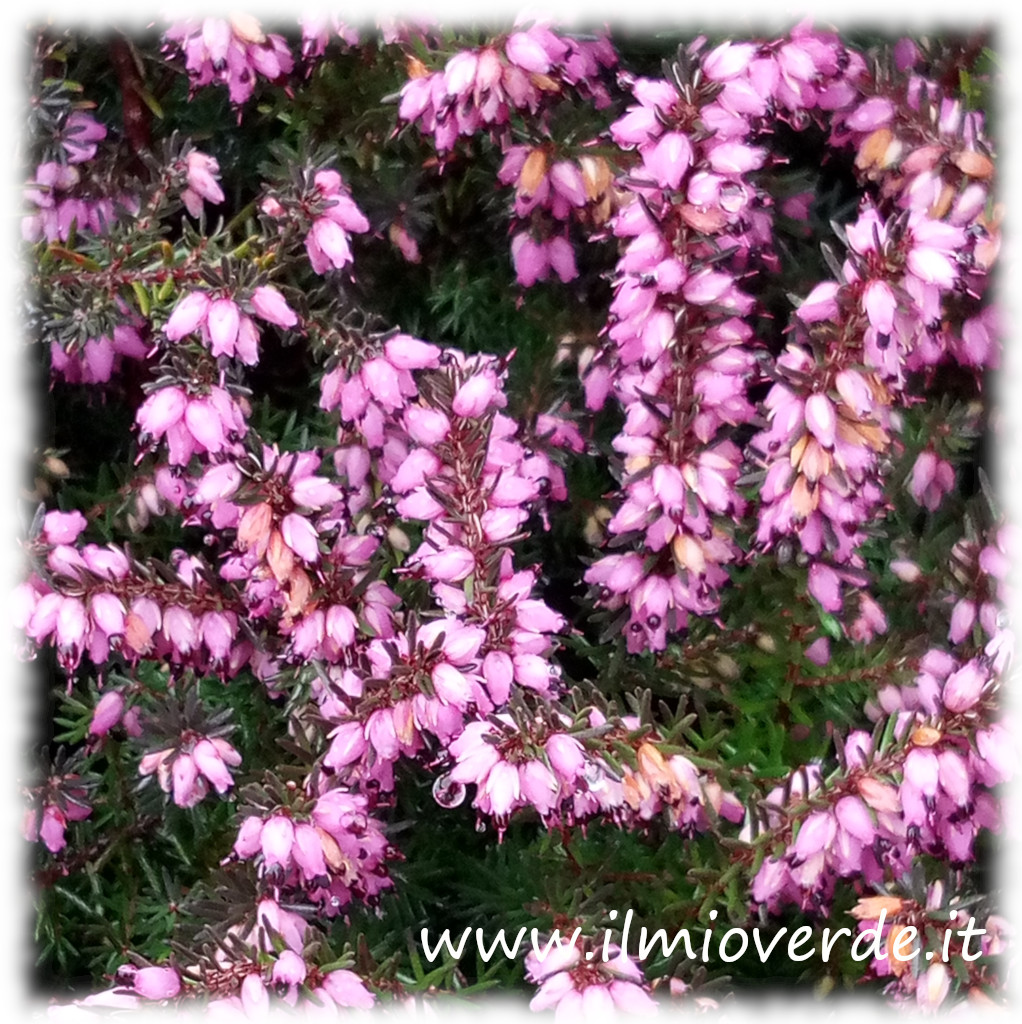Erica carnea
Scientific Classification
- Kingdom: Plantae
- Order: Ericales
- Family: Ericaceae
- Genus: Erica
- Species: Erica carnea
History and Origins
The name Erica comes from the Greek word ereíko, meaning “to break” or “to shatter”, possibly referring to the fragile nature of its branches or its supposed medicinal properties. The term carnea refers to the typical colour of its flowers, which range from pink to purple. Native to Central and Southern Europe, this species is commonly found in mountainous and hilly regions, where it thrives in acidic, well-drained soils.
Description
Erica carnea is an evergreen, ground-covering shrub that grows to a height of 10–30 cm. It has narrow, dark green, needle-like leaves arranged in a spiral along the branches. Its bell-shaped flowers bloom in winter and early spring, giving the plant a vibrant appearance even during the coldest months.
Characteristics and Cultivation
- Flowering: From December to April, depending on the climate.
- Climate: Prefers a temperate to cold climate. It is frost-resistant and adapts well to mountainous conditions.
- Exposure: Prefers sunny or partially shaded locations. Full sun enhances flowering.
- Soil: Thrives in acidic, well-drained substrates but can tolerate slightly calcareous soils.
- Watering: Moderate; avoid waterlogging, which can cause root rot. In summer, if grown in pots, it requires more frequent watering.
- Fertilisation: Acid-loving plant fertiliser can be applied in spring to encourage growth and flowering.
Propagation
Propagation occurs through seeds or semi-woody cuttings in summer. A less common method is division of clumps in autumn.
Care and Advice
After flowering, light pruning is recommended to maintain a compact shape and stimulate new growth. Erica carnea is resistant to many diseases but may be affected by aphids or mites, particularly in prolonged drought conditions.
Ornamental Use
Thanks to its winter flowering, it is ideal for rock gardens, borders, and flower beds. It pairs well with other acid-loving plants such as rhododendrons and azaleas, as well as ornamental grasses.
Interesting Facts
- It is a honey-producing plant, much appreciated by bees during the first sunny days of winter.
- In the past, heather was used to make brooms and as a herbal remedy for its diuretic properties.
Erica carnea is the perfect plant for those who want a colourful garden even in the coldest months. It requires little maintenance but offers a striking decorative effect.
Immagine di Davide Giuseppe Zannini
